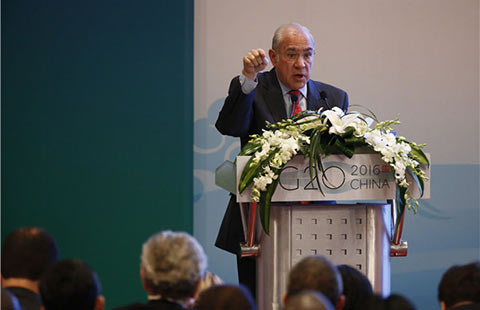China signals stronger pro-growth policy stance
(Xinhua) Updated: 2016-03-01 11:34However, the easing to be applied in 2016 will not be a "one size fits all," as the central bank will "seek to strike a balance between monetary accommodation and the need to facilitate structural reform," Qu added.
Further expansion, with higher deficit
While monetary easing seems to be gaining traction, officials have also signalled higher priority on further fiscal expansion to counter the downturn.
China still has room to expand fiscal policy to push structural reforms, the finance minister said on the sidelines of the meetings, predicting an increase in budget deficit this year.
A proactive fiscal policy has been the official line since the global financial crisis, but recent policies showed more tolerance of deficit.
Fiscal spending growth in the fourth quarter of 2015 accelerated to 14.7 percent year on year, with fiscal deficit expanding 23.3 percent year on year, according to China Int. Capital Corp. (CICC).
China raised its budget deficit to 2.3 percent of GDP in 2015, up from 2.1 percent in 2014. A 3-percent deficit ratio is normally considered the line not to be crossed.
But director of the central bank's surveys and statistics department Sheng Songcheng last week suggested that China could raise the ratio to 4 percent of GDP or even higher.
"The 3-percent warning does not fit with China's reality," Sheng said, citing China's relatively small outstanding debt, rational structure, continued growth in fiscal revenue and solid assets of state firms.
UBS economist Wang Tao also believes more fiscal policy options are still available in China, saying that government debt levels remain moderate and manageable; there is still room to build more infrastructure and improve the safety net; and domestic savings are high enough to finance government borrowing.
Qu at HSBC expects larger fiscal spending will be used to cushion the impact of restructuring in sectors struggling with overcapacity, promoting industrial upgrading and infrastructure investment.
"Judging by the tone of the recent discussions, a deficit target of anywhere between 4 percent to 5 percent of GDP is certainly possible," Qu wrote in a research note on previewing China's 2016 economic policies on Sunday.
- China promotes share, dividend incentives among SOEs
- China should not be blamed for world economic slowdown
- Russian tourists rushing back to China
- LA sees influx of Chinese visitors
- Company threads its way to Middle East
- Jumei investors demand higher share buyback price
- Apple supplier Manz to sell 29.9% stake to Shanghai Electric
- Alibaba's Internet lender extends $6.88b in loans in 8 months
















